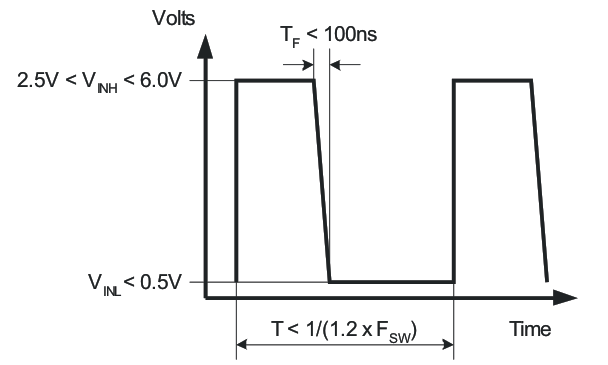SLUU297B December 2007 – January 2022 TPS40195
6.5 Switch Node (TP4) and SYNC (TP12)
- Set up the EVM as described in Section 5.2 and Figure 5-1.
- Use the oscilloscope to monitor TP4. Set the
oscilloscope to the following:
- 1-MΩ input impedance
- 20-MHz Bandwidth
- AC coupling
- 1-μs/div horizontal resolution
- 5-V/div vertical resolution
- Increase VIN to 12 V.
- Set LOAD1 to 10 A.
- Vary LOAD1 and observe the oscilloscope.
- Vary VIN and observe the oscilloscope.
- Set the signal generator to 360 kHz and pulse shape per Figure 6-1.
- Connect the signal generator to TP12.
- Monitor TP12 and TP4 with the oscilloscope.
- Vary signal generator frequency from 360 kHz to 400 kHz.
- See Section 6.6 for equipment shutdown.
 Figure 6-3 Typical TPS40195EVM SYNC
Signal. The TPS40195 Synchronizes on the Falling Edge.
Figure 6-3 Typical TPS40195EVM SYNC
Signal. The TPS40195 Synchronizes on the Falling Edge.